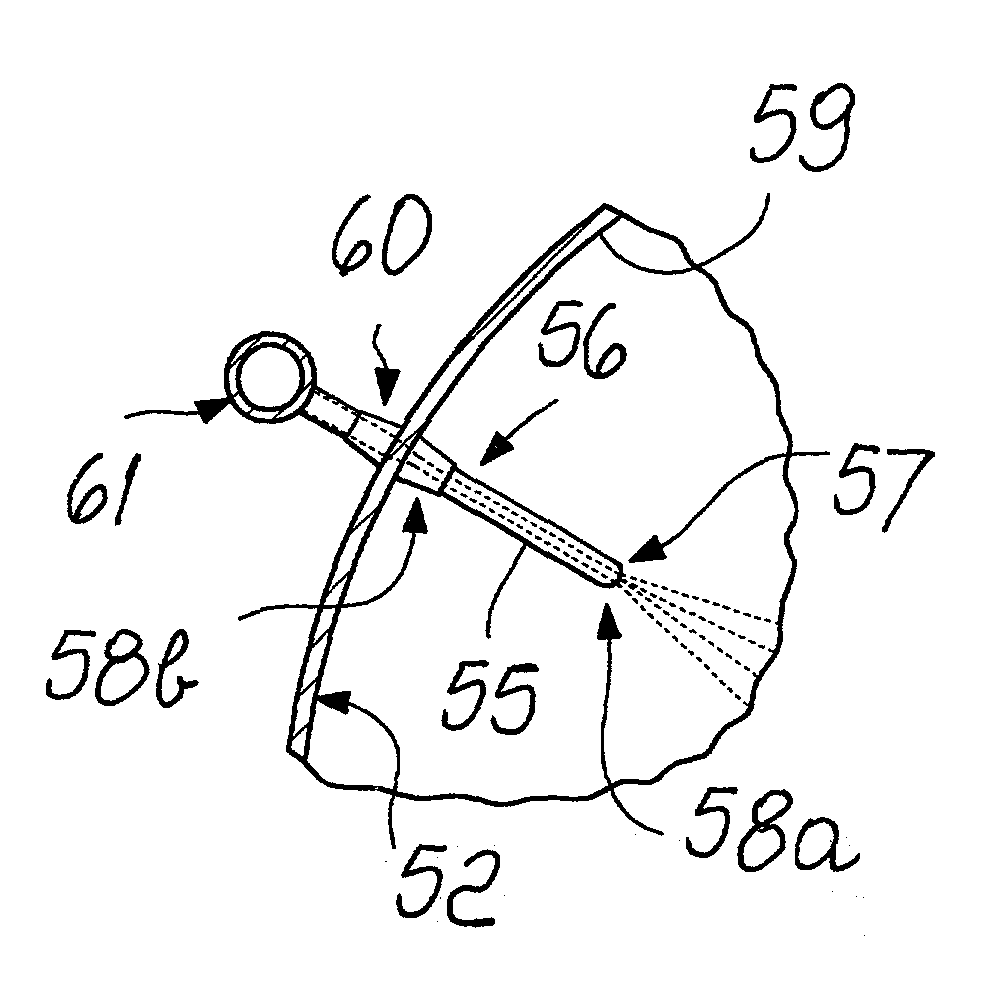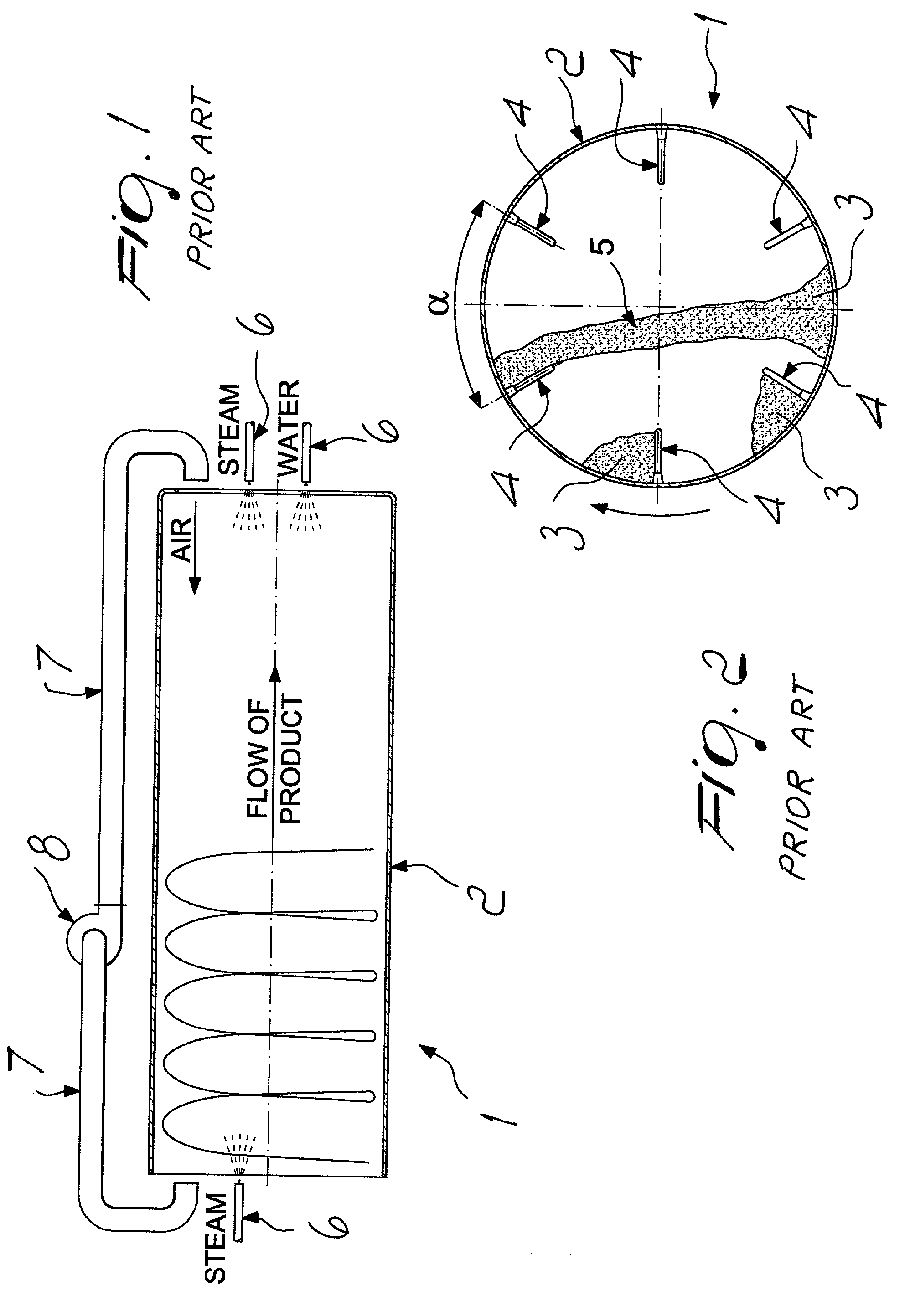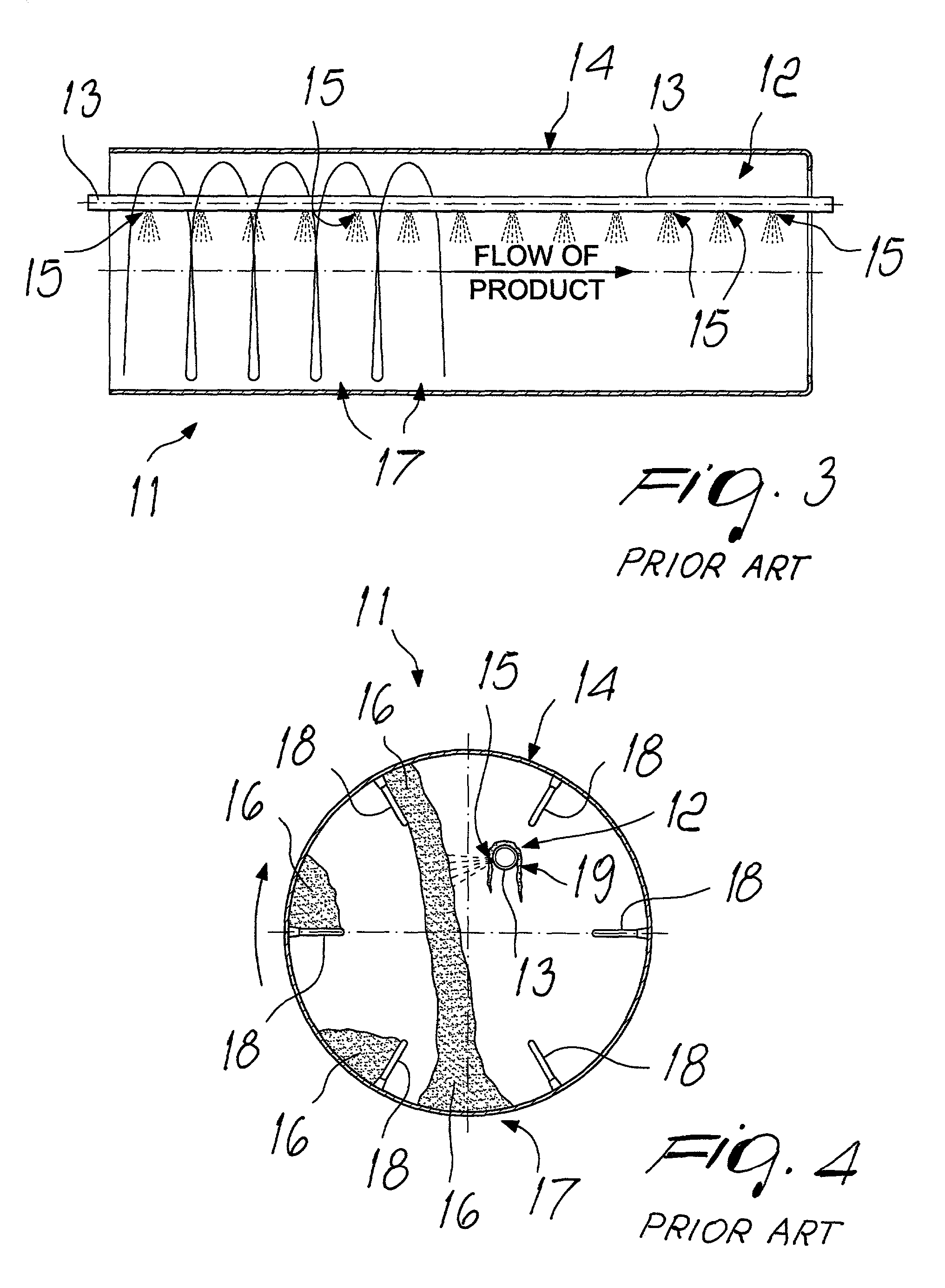Tobacco processing machine
a technology for processing machines and tobacco, which is applied in the field of machines for processing tobacco bales or slices, can solve the problems of difficult control of the behavior of the temperature curve along the axis of the cylinder, scarcely effective humidification and/or heating of the intermediate product, and difficult control of the temperature curve. , to achieve the effect of scarcely effective equalization of temperature behavior
- Summary
- Abstract
- Description
- Claims
- Application Information
AI Technical Summary
Benefits of technology
Problems solved by technology
Method used
Image
Examples
Embodiment Construction
[0051]With reference to the figures, the reference numeral 51 designates a machine for processing tobacco bales or slices, advantageously constituted by a frame 52, which is advantageously cylindrical, conveniently hollow and arranged so that its axis is slightly inclined.
[0052]The frame 52 has, at its free ends, a tobacco input region 53a and an output region 53b for a intermediate product, which is designated by the reference numeral 54 in FIG. 6; in particular, the frame 52 is inclined so that the output region 53b is located at a lower level than the input region 53a.
[0053]The frame 52 rotates about its own axis so as to allow the intermediate product 54 to move toward the output region 53b.
[0054]During its rotation, the frame 52 also breaks up the tobacco bales or slices, advantageously through suitable movement means, which in this particular embodiment are constituted by multiple rods 55 that protrude radially inside the frame 52.
[0055]The machine 51 further comprises humid...
PUM
 Login to View More
Login to View More Abstract
Description
Claims
Application Information
 Login to View More
Login to View More - R&D
- Intellectual Property
- Life Sciences
- Materials
- Tech Scout
- Unparalleled Data Quality
- Higher Quality Content
- 60% Fewer Hallucinations
Browse by: Latest US Patents, China's latest patents, Technical Efficacy Thesaurus, Application Domain, Technology Topic, Popular Technical Reports.
© 2025 PatSnap. All rights reserved.Legal|Privacy policy|Modern Slavery Act Transparency Statement|Sitemap|About US| Contact US: help@patsnap.com



